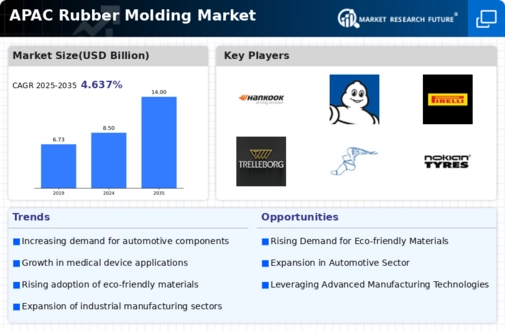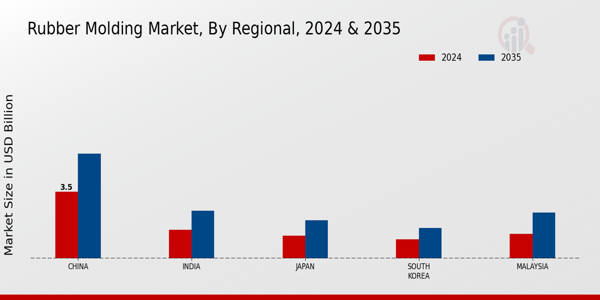The APAC Rubber Molding Market is characterized by a dynamic landscape driven by increasing demand across various industries, including automotive, electronics, and consumer goods. The competition in this market is influenced by several factors, such as technological advancements, shifting consumer preferences, and regulatory changes. With an increasing focus on sustainable manufacturing practices, companies are innovating their processes and materials, leading to enhanced product offerings.
The landscape is also shaped by the presence of established players and emerging startups seeking to carve out a niche. As companies strive to maintain a competitive edge, investments in research and development are becoming a critical focus, allowing for the creation of high-quality rubber molded products that meet diverse applications in the region.
Zhongce Rubber Group stands out in the APAC Rubber Molding Market due to its robust manufacturing capabilities and extensive distribution network. The company emphasizes innovation and quality, which contributes significantly to its strong market presence. Zhongce Rubber Group has established itself as a key player by integrating modern technology into its production processes, ensuring that its products meet international standards. The company's strengths lie in its comprehensive range of rubber products catering to various sectors, particularly in the automotive industry, where it supplies tires and other rubber components.
Additionally, Zhongce's strong partnerships with local distributors enhance its reach and accessibility, allowing it to respond swiftly to market demands and consumer needs.
Hankook Tire contributes notably to the APAC Rubber Molding Market, focusing on high-performance tires and rubber products. Known for its commitment to innovation, Hankook Tire invests heavily in research and development, leading to the expansion of its product lineup, which includes tires for passenger vehicles, trucks, and buses. The company's emphasis on quality and performance has strengthened its position in the market, enabling it to build a loyal customer base. Additionally, Hankook Tire is known for strategic mergers and acquisitions that have expanded its market footprint and enhanced its technological capabilities.
These initiatives, alongside its established manufacturing plants in the region, ensure a strong supply chain and timely delivery of products, further solidifying Hankook's presence in the competitive APAC rubber molding landscape. The combination of advanced technology, a diverse product range, and strategic operations positions Hankook Tire as a significant force within this sector in the APAC region.





















